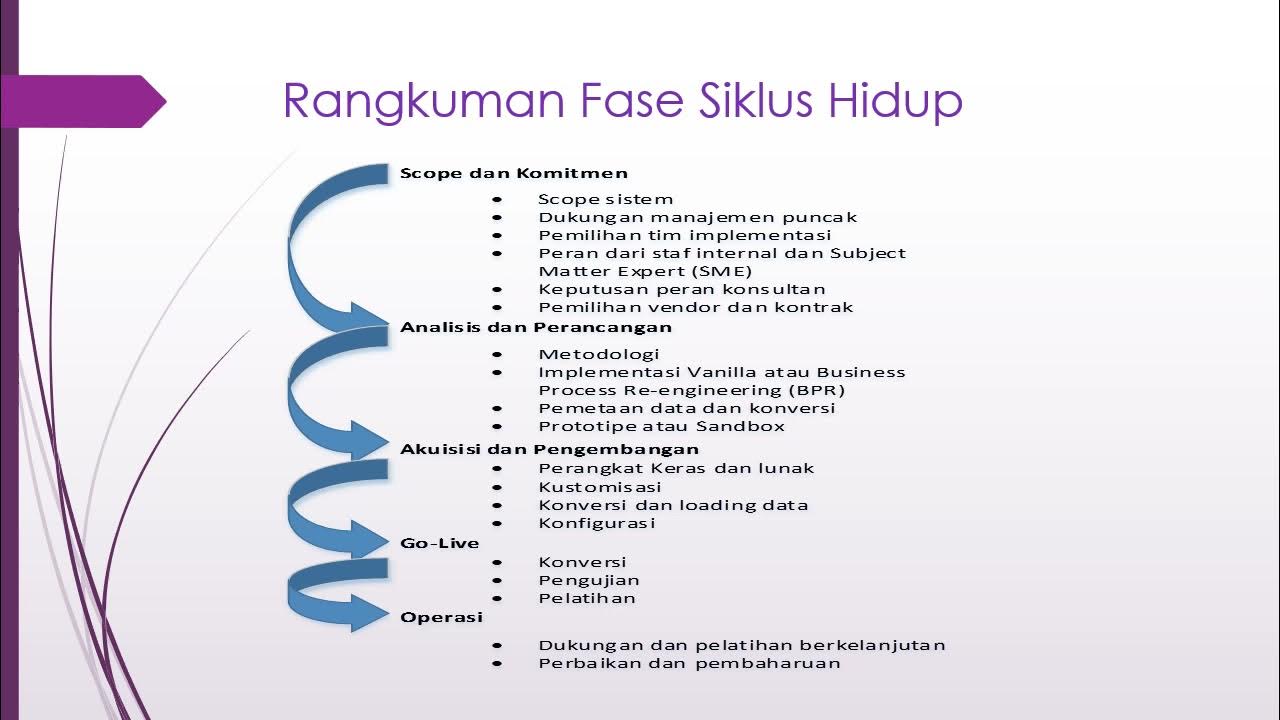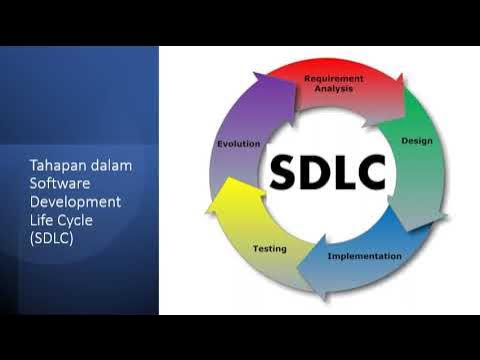Sumber Perangkat Lunak Aplikasi - Komersial dari Vendor
Summary
TLDRThis video lecture on software testing and implementation focuses on the development of software, specifically discussing the difference between commercial software and customized solutions. The instructor explains how companies can opt for ready-made software packages from vendors or choose to develop tailored solutions that meet their unique organizational needs. While commercial software offers quick implementation and cost savings, it may not fully address specific requirements, unlike custom-built solutions that cater directly to a company’s operational needs. The lecture also covers factors to consider when selecting software, like vendor reliability, functionality, and cost.
Takeaways
- 😀 In software development, two main types of software can be used: commercial software from vendors and customized software developed in-house.
- 😀 Commercial software is pre-built by vendors and can be quickly implemented, saving time and costs for organizations.
- 😀 Customized software is built specifically for the needs of a particular company, allowing for greater flexibility but requiring more time and resources for development.
- 😀 One major advantage of commercial software is quick implementation, as the software is already developed and just needs to be installed.
- 😀 Commercial software often comes with lower costs compared to building custom software from scratch, as the development work is already done.
- 😀 Commercial software is typically more reliable since it undergoes extensive testing before release, ensuring fewer bugs and better performance.
- 😀 A disadvantage of commercial software is that it may not perfectly meet all the specific needs of an organization, leading to limitations in functionality.
- 😀 Another downside of commercial software is the dependency on the vendor for updates and support, making the organization vulnerable if the vendor goes out of business or stops support.
- 😀 When selecting software, factors like the vendor's reputation, software performance, documentation, ease of use, and cost should be considered through detailed evaluation.
- 😀 The selection process should involve scoring various software vendors on these factors and weighing the importance of each factor based on the company's needs.
- 😀 After evaluating software vendors, the final choice should be made based on the software that offers the best balance between functionality and cost, with the lowest cost being a key decision factor.
Q & A
What are the two main sources for obtaining software applications in organizations?
-The two main sources are commercial software from vendors and customized software (tailored applications) developed to meet the specific needs of the organization.
How does commercial software differ from customized software?
-Commercial software is pre-built by vendors and sold as a package for general use, whereas customized software is developed specifically to address the unique requirements of an organization.
What are some examples of commercial software mentioned in the script?
-Examples of commercial software include office software like Microsoft Office and financial or business applications like Oracle.
What is the main advantage of using commercial software from a vendor?
-The main advantage is the speed of implementation, as the software is already developed, and the organization can install and use it immediately.
What are the potential drawbacks of using commercial software?
-One drawback is that commercial software may not meet all of an organization's specific needs, as it is designed to serve a wide range of businesses and use cases.
How can customized software benefit an organization?
-Customized software can be tailored to meet the exact needs of the organization, allowing for more precise functionality and alignment with business processes.
What is the significance of 'reliability' in commercial software?
-Reliability is important because commercial software undergoes extensive testing before being released, ensuring that it is stable, secure, and dependable for organizational use.
What are the key factors to consider when evaluating vendor software?
-Key factors include vendor reputation, software performance, ease of use, documentation quality, error handling, and post-implementation support.
What is the process of selecting software from vendors, as outlined in the script?
-The process involves comparing software packages based on various factors like vendor reliability, functionality, ease of use, and cost. A scoring system is used to rank the software based on these factors.
How are costs considered in the software selection process?
-Cost is evaluated by calculating the 'total cost of ownership,' which includes both direct costs (like purchase price) and indirect costs (like training and support). The software with the best combination of low cost and high benefit is typically selected.
Outlines

此内容仅限付费用户访问。 请升级后访问。
立即升级Mindmap

此内容仅限付费用户访问。 请升级后访问。
立即升级Keywords

此内容仅限付费用户访问。 请升级后访问。
立即升级Highlights

此内容仅限付费用户访问。 请升级后访问。
立即升级Transcripts

此内容仅限付费用户访问。 请升级后访问。
立即升级浏览更多相关视频

Video SE 5_2 Siklus Hidup Pengembangan ERP

Pertemuan 12 Pengujian White Box Testing dan Black box Testing Rev0 0

Pengantar Rekayasa Perangkat Lunak (Software Engineering)

5 Types Of Software Testing & When To Use Them

RPL - 02 Proses Rekayasa Perangkat Lunak (Software Process)

Metodologi Pengembangan Software 2
5.0 / 5 (0 votes)
